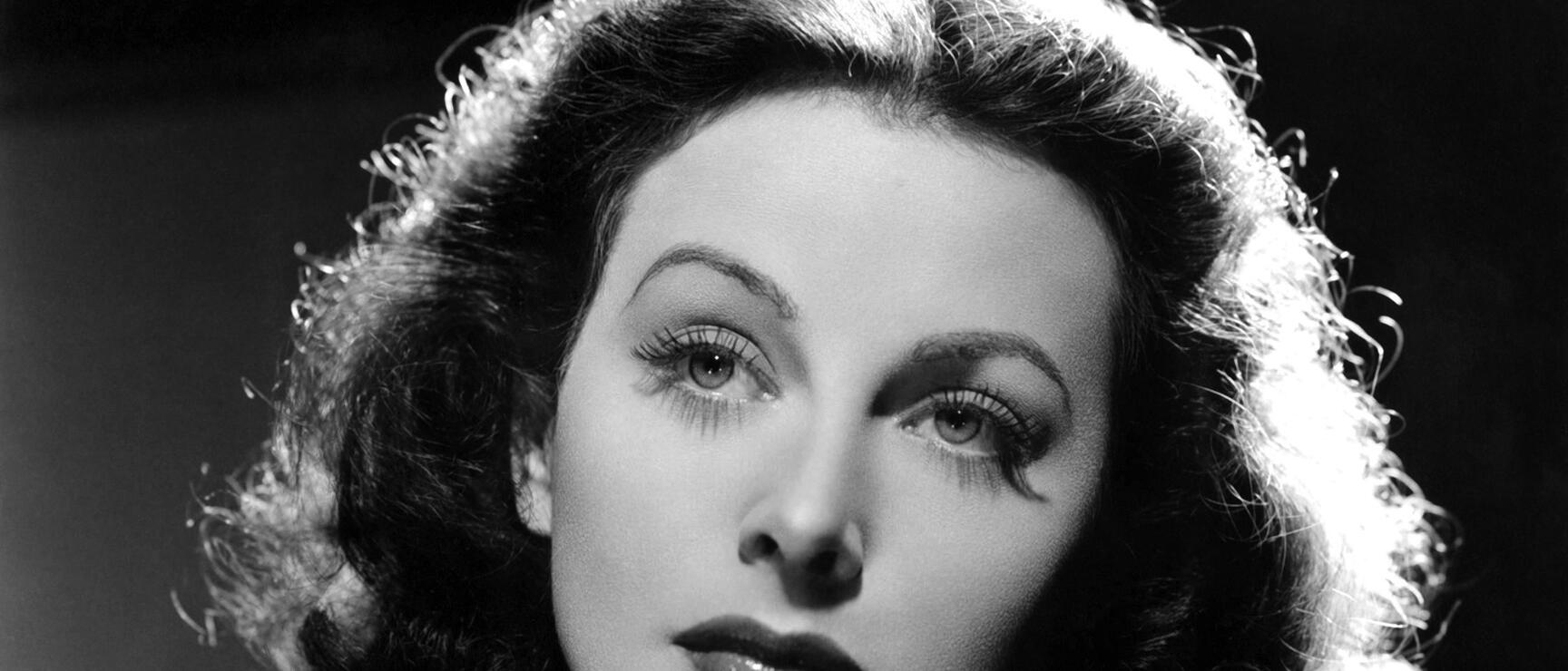
Hedy Lamarr
Film Diva and Lady Bluetooth
Born in 1914 in Döbling, Vienna, the young Hedwig Eva Maria Kiesler already loved to experiment as a little girl. She also discovered her love for film at an early age. And so she made history with her very first foray into the film business: A screen-filling nude scene in the Czech arthouse film “Ekstase” was a full-blown scandal. Later, she played Empress Elisabeth at the Theater an der Wien in Vienna.
In 1933, the actress married the much older, and quite jealous, weapons manufacturer Fritz Mandl, whom she ran away from to New York in 1937. She changed her name to Hedy Lamarr upon the recommendation of legendary MGM-Studio head Louis B. Mayer. Billed as „the world’s most beautiful woman,” Lamarr was known more for her androgynous, European style than her acting skills. In the late 1930s, fellow actresses copied her style, coloured their hair brunette and wore it parted in the middle. Like Lamarr, they wore hats, turbans and scarves. Neither the movie “Algiers” nor the history drama „Samson and Delilah“ directed by Cecile B. DeMille were smash hits.
Apart from acting, Lamarr was interested in technological innovations. Together with experimental musician George Antheil, who also had immigrated to the US, she developed a patent for frequency-hopping spread spectrum communication which is used today - in a slightly different form - in wireless communications such as Bluetooth. For this invention, she was awarded the technological equivalent of an Oscar, the EEF-Pioneer Award. Hedy Lamarr died in 2000, in Florida, in relative obscurity. Today, her reputation as “Lady Bluetooth'' is her most important legacy.
“I must quit marrying men who feel inferior to me. Somewhere there must be a man who could be my husband and not feel inferior. I need a superior inferior man.”
In her footsteps in Vienna
For women in research
Hedy Lamarr Award
In 1942, Hedy Lamarr developed the frequency-hopping technique together with composer George Antheil. Their idea of switching radio frequencies continuously made it possible to guide torpedoes securely — and laid the foundation for today’s wireless communication, including technologies like Bluetooth. In the 1990s, Bluetooth was developed to transmit data over short distances between devices. Each device has a transmitter, receiver and a 48-digit identification number. Data is transmitted over the ISM band.
Since 2018, the City of Vienna has awarded the Hedy Lamarr Prize to women shaping the digital world. In 2024, it was awarded to researcher Laura Koesten at the University of Vienna. She was honoured for her outstanding achievements in the field of information technology.